#thom jurek
Text
youtube
Vamos con otra de Joan Baez... En diciembre de 1968 publicó un álbum doble dedicado exclusivamente a las canciones de Dylan, "Any Day Now: Songs of Bob Dylan" (Vanguard), conteniendo varias que hasta ese momento su autor ni siquiera había publicado.
Creo que no existía en ese momento sobre la faz de la tierra una cantante más legitimada para cantar a Dylan que Baez. El disco es estupendo en general, y la valiente Joan hasta se atrevió - saliendo bien parada- con la larga "Sad Eyed Lady Of The Lowlands", el tema que ocupó la cara cuarta del maravilloso e inolvidable "Blonde On Blonde" (Columbia 1966).
Thom Jurek en Allmusic: "Su empatía por el material, su aguda comprensión del mundo sonoro de Dylan y su propia voz gloriosa aportaron otra dimensión a estas 16 canciones y, en todo caso, ampliaron sus significados. No hay mejor intérprete de la música de Dylan, y aunque ciertamente se ofrecieron pruebas de ello en grabaciones anteriores (como 'Joan' de 1967), el veredicto se solidificó aquí… La conclusión es que 'Any Day Now', al igual que el siguiente álbum "David", encontró Báez en un pico intensamente inspirador y creativo."
2 notes
·
View notes
Text
46: Bob Seger // Back in '72

Back in '72
Bob Seger
1973, Reprise
Like a lot of musically-inclined people my age (49), AllMusic.com was a critical part of my early ‘00s descent into abject nerdom and permanent homeliness. It was (and I suppose, still is) an unmatched repository of discographic information and professional reviews of the major pop and rock artists of the past half-century, and I spent hours each week on my shitty dial-up internet trawling through reviews of hundreds and eventually thousands of albums that I would try to imagine based on their writing.
The chief, to me, among AllMusic’s stacked bullpen of critics at the time was Stephen Thomas Erlewine. (Though I’ve become more of a Thom Jurek man in my old age.) Erlewine drew the job of reviewing a lot of the entry-level artists I was most taken with (R.E.M., Elvis Costello, the Kinks, Nick Lowe, the Replacements, and so on), and he had a way of writing what was essentially the Supreme Court majority opinion on a de rigueur classic in a voice that still sounded like a seasoned listener giving his own take. Like any good critic, the comparisons and offhand references in his reviews opened a lot of doors for me—and one of those doors led to early Bob Seger.
youtube
Growing up across the Canadian border from Detroit, I was raised on dad rock radio with a Motor City slant, which elevated local ham-and-eggers like Mitch Ryder to regular rotation and Michigan’s favourite son Robert Clark Seger to peerage with the Stones and Zeppelin. Starting with 1975’s essential double live ‘Live’ Bullet, Seger was a reliable national hitmaker for a good ten years, and he’s remembered fondly for it—but few critics have historically put Bob on a par with similar working-class hero Bruce Springsteen. That’s why it meant something to me that Erlewine, himself born in Bob’s hometown of Ann Arbor, treated the Seger catalogue with the same reverence he brought to the rest of the established canon.
I’d heard a few of Seger’s pre-Silver Bullet Band singles on Detroit radio, when a DJ like WCSX’s Ken Calvert would throw on a scratchy oldie like “Persecution Smith” or “Heavy Music,” but the album-by-album narrative that unwound through Erlewine’s reviews hooked me. An aspiring rocker since he started his first band in 1961, Seger tried out all sorts of gimmicks, from parodies (“The Ballad of the Yellow Beret”) to novelty songs (“Sock It To Me Santa!”) to a Bob Dylan impression (“Persecution Smith”). But Seger’s first taste of regional success was as a feral garage rocker with combos like The Last Heard and The Bob Seger System.
Like Otis Redding, an obvious vocal influence, Seger reaches his high notes by clenching his vocal cords and pushing hard, producing a plaintive quaver he’d eventually deploy toward the melting of hearts. But in his garage days, Bob was melting faces with a venomous arsenal of snarls and shrieks on stone classics like “Lucifer,” “Death Row,” and “2+2=?” that match the intensity (if not the scuzzy low-end) of anything by the Stooges or MC5. If Seger had put down his guitar and gotten a day job after failing to follow up his 1969 hit “Ramblin’ Gamblin’ Man” (his first top 20 national hit, and his last till 1976’s “Night Moves”) he’d be a staple of collector bait reissue labels. But Seger always believed, “You're nobody if you can't get on the radio,” and he kept grinding away, looking for a sound that would make him a star.
youtube
1969’s psych-inflected Ramblin’ Gamblin’ Man LP wasn’t it. Neither was 1970’s balls-to-the-wall raver Mongrel. It definitely wasn’t 1971’s acoustic folk venture Brand New Morning. But, on 1973’s goofily-titled Back in ’72, he suddenly sounds like Radio Bob: thick, white man’s R&B that’s part Ike & Tina, part Van Morrison, part southern rock. A lot of it’s down to the musicians he’s working with. First there’s the Borneo Band (credited here as My Band), a combo as capable of working an R&B audience into a lather as anyone in 1973 (as a number of righteous live bootlegs can confirm). And secondly there’s the Muscle Shoals Rhythm Section, Alabama’s answer to session aces like the Wrecking Crew and the Funk Brothers. They’d played on a few hits in their time, and they represented the professionalism and success Seger aspired to. While Seger could only afford to work with them on three songs during the Back in ‘72 sessions, he’d go on using them as often as possible on his future albums (often to the chagrin of his touring musicians).
There are still some growing pains. Back in ’72 opens with its three weakest tracks: a passable cover of the Allman Brothers’ “Midnight Rider”; treacly original “I Wrote You a Song,” in which Bob sheepishly bleats most of the higher notes; and a cover of Free’s “The Stealer,” a song I am incapable of giving a shit about no matter who records it. From there though, things suddenly and dramatically improve.
“Rosalie,” written for Leamington, Ontario’s teenage tastemaker (and my grandma’s high school classmate) Rosalie Trombley, is an immortal pub rocker that would eventually find a second life through Thin Lizzy’s hit cover; diesel-powered travelogue “Back in ‘72” sets the template for (and easily outmuscles any of) his later heavy numbers; a read of Van Morrison’s “I’ve Been Workin’” turns into a true workout that makes clear why it would remain a setlist staple over the next few years. And then there’s “Turn the Page,” perhaps Seger’s signature song. The version here is more subdued than the better-known ‘Live’ Bullet rendition, and if as a vocalist Seger can’t quite inhabit the weary determination of the lyric in the way he soon would, it remains a worthy rendition on its own merits.
On Back in ’72 Seger and his band(s) finally sound like they’re capable of reaching an arena-sized audience. While it would take another four years before they’d actually do so outside the Midwest, the LP is an essential part of his journey. Few of Seger’s pre-1975 albums are easy to lay hands on these days—Bob seems to consider them juvenilia, the work of someone who wasn’t yet ready for the big time, and has refused to reissue any of them in recent years or allow them to reach streaming platforms. That’s a shame. After reading Erlewine’s rave reviews of his early catalogue, I was lucky to download them from blogs, and I’m still working on hunting down the best of them on wax. (While I prefer 1970’s Mongrel and 1974’s Seven, Back in ’72 is the only one of his formative records I actually own on LP—ironically, it’s among the rarest.) Despite Seger’s dismissal, this era of his career is a good part of what made him a major artist in his time and place, and deserves to be heard by a wider audience.
46/365
#bob seger#the bob seger system#bob seger & the silver bullet band#michigan#detroit#detroit rock city#classic rock#garage rock#music review#allmusic#stephen thomas erlewine#thom jurek#vinyl record#'70s music
1 note
·
View note
Text

Ornette Coleman – The Complete Science Fiction Sessions
The album includes all of the music that was originally issued on Science Fiction (Columbia, 1972) and Broken Shadows (Columbia, 1982), along with previously unreleased material.
In a review for AllMusic, Thom Jurek called the album “a stellar collection of Ornette-ology assembled in one place,” and wrote: “This is some of his very best material, archived and issued the way it should have been in the first place.”
12 notes
·
View notes
Text

Mekons - Lost Highway (𝟏𝟗𝟖𝟓)
Leon Payne
from: "Fear and Whiskey" (LP)
Cowpunk | Alt. Country | Hank Williams Cover
JukeHostUK
(left click = play)
(320kbps)
Personnel:
Tom "Cat" Greenhalgh: Vocals / Guitar / Piano
Jon "Don Juan" Langford: Vocals / Guitar / Harp
Dick "Sir Dickie" Taylor: Lead Guitar
Ken Lite: Rhythm Guitar / Backing Vocals
Susie "Honeybaby" Honeyman: Fiddle
Lu Edmonds: Bass
Steve "Ghoulding" Goulding: Drums
Produced by Mekons
Recorded:
@ Lion Studios
in Leeds, England UK
1984–1985
Released:
June, 1985
Sin Records
(Mekons' own record label)
Quarterstick Records
(2002 Reissue)
"… credited as being the first alternative country album."
- Wikipedia
Tom Greenhalgh commented that as he listened to a great deal of country music in the early 1980s, "pretty soon the difference between the three chords of country and the three chords of punk became blurred."
- Wikipedia
"("Fear and Whiskey") … one of the greatest records ever."
- Thom Jurek (AllMusicCom)
7 notes
·
View notes
Text

AllMusic Staff Pick:
Ralph Towner
Solstice
On his 1974 debut for ECM, the renowned Oregon guitarist enlists Jan Garbarek, Eberhard Weber and Jon Christensen in a program of pure expressionistic folk-inspired jazz. The album lifted not only his own profile, but the label's as well.
- Thom Jurek
2 notes
·
View notes
Audio
Muriel Grossmann - Universal Code
LINER NOTES OF UNIVERSAL CODE BY THOM JUREK
Since 2007, saxophonist and composer Muriel Grossmann has been releasing albums of uncommon quality and depth. After arriving in Ibiza from Barcelona in 2004, she has created a distinctively individual approach to spiritual jazz. Building on a sound developed in the 1960s by the Coltranes and others, Grossmann's approach joins African music, modal jazz, gospel, blues, free-jazz and Eastern traditions with a fluid, nearly elastic polyrhythmic sensibility.
The Paris-born, Vienna-raised Grossmann believes our evolution towards enlightenment is already engraved in our being, our humanity. While physical DNA evidences it biologically, our path according to Buddhist belief, no matter how many lifetimes we inhabit, always moves towards an awakening that transcends, and ultimately frees us from DNA's biological limitations. Music, a form of communication that exists beyond spoken language transcends its own formally notated DNA. Grossmann employs her experiential and learned musical and life knowledge, linking them to a profound desire to ease the suffering of others, and to encourage evolution toward enlightenment and freedom.
This music on Universal Code is long on contemplative, instrumental dexterity, as well as harmonic and rhythmic invention. Its spiritual aspirations are articulated via interrogative melodies, poignant solos, and interwoven grooves that resonate inside the listener's ears, mind, and body. Universal Code features Grossmann's quartet on six tracks that bookend three ("Transience," "Essence," and "Non-Duality"), with a quintet that includes double bassist Gina Schwarz. Belgrade-born guitarist Radomir Milojkovic has been working with Grossmann since 2002. His rounded tone and endless curiosity add immeasurably to the group's questing approach. Serbian drummer Uros Stamenkovic and double bassist Gina Schwarz (herself an Austrian bandleader and recording artist) joined for 2016's Natural Time, trademarking the collective's unique approach. In 2018, Hammond B-3 organist Llorenç Barcelo, from the neighbouring island Mallorca, joined the band, appearing on 2019's Reverence, 2020’s Quiet Earth and 2021’s Union....
These musicians communicate an aural, instructive journey through emotions, spiritual states, doubt, and awareness collectively and individually. Universal Code is an achievement. It frames their utterances, questions and discoveries in a visionary yet warmly welcoming approach that exponentially extends the spiritual jazz tradition in the 21st century.
~ Thom Jurek, is an author, poet, and senior writer All-Music Guide.
Muriel Grossmann saxophones
Radomir Milojkovic guitar
Llorenç Barceló hammond organ
Uros Stamenkovic drums
and
Gina Schwarz upright bass on Non-Duality, Essence, Liberation
Composed by Muriel Grossmann
Painting by Ayelén, Iassù, Radomir, Muriel
6 notes
·
View notes
Text
Thursday, August 31, 2023 6pm ET: Feature LP: Gov't Mule - Peace. . . Like A River (2023)
Peace… Like a River is a studio album by American jam band Gov’t Mule. Released June 16, 2023.
Editors at AllMusic rated this album 3.5 out of 5 stars, with critic Thom Jurek writing that this release sounds completely different to the band’s previous effort Heavy Load Blues, but acts as a complement to it, calling this album “a labyrinthine trek through original songs that nod at the band’s…

View On WordPress
0 notes
Text
Francis Lai: Concerto Pour La Fin D'un Amour (1969) Partitura
De la película ” Un homme qui me plaît / Love Is a Funny Thing – Música de Francis Lai.
Francis Lai Concerto Pour La Fin D'un Amour (1969) (partitura)
https://www.youtube.com/watch?v=rUUo7RTnaBk
Piano Solo
https://vimeo.com/702600270
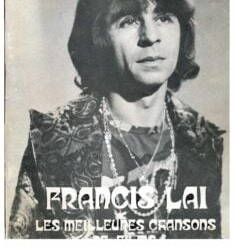
Francis Albert Lai (26 de abril de 1932 - 7 de noviembre de 2018) fue un compositor francés, conocido por sus bandas sonoras de películas. Ganó el Oscar de 1970 a la Mejor Música, Banda Sonora Original y el Globo de Oro a la Mejor Banda Sonora Original por la película Love Story. El álbum de la banda sonora llegó al número 2 en las listas de álbumes de Billboard y el tema de la película, '¿Dónde empiezo?', fue un sencillo de éxito para Andy Williams.
Lai nació el 26 de abril de 1932, en Niza , Francia, hijo de jardineros de origen italiano. Desde muy temprana edad, Lai estuvo fascinado por la música y tocó por primera vez en las orquestas regionales de su localidad. En Marsella descubre el jazz y conoce a Claude Goaty, cantante de canciones populares de los años 50.
Cuando tenía veinte años, Lai se fue de casa y siguió a Goaty a París , donde se convirtió en parte de la animada de Montmartre escena musical . La “Taverne d'Attilio” en la Place du Tertre en Montmartre, fue un lugar favorito para el joven talentoso Bernard Dimey con quien Lai compuso su primera canción. Su asociación de composición de canciones se extendería a un centenar más o menos. Después de un breve período con la orquesta de Michel Magne , Lai se convirtió en acompañante de Édith Piaf y también en uno de sus compositores.
En 1965 conoció al cineasta Claude Lelouch y fue contratado para ayudar a escribir la banda sonora de la película Un hombre y una mujer . Estrenada en 1966, la película fue un gran éxito internacional y ganó varios premios de la Academia . El joven Lai recibió una nominación al Globo de Oro por "Mejor Banda Sonora Original".
Este éxito inicial trajo más oportunidades de trabajar para la industria cinematográfica tanto en su Francia natal, donde continuó trabajando con Lelouch en bandas sonoras de películas como Vivre pour vivre (1967), Un homme qui me plaît (1969), Le voyou ( 1970) y La bonne année (1973), así como en Gran Bretaña y Estados Unidos . Fue conocido por su apoyo a Mireille Mathieu en muchas composiciones y grabaciones. En 1970 escribió la banda sonora de la película del director René Clément , Rider on the Rain ("Le passer de la pluie"). Vendió más de un millón de copias y recibió un disco de oro en septiembre de 1971.
En 1970, Lai ganó el Premio de la Academia a la Mejor Música, Banda Sonora Original y el Globo de Oro a la Mejor Banda Sonora Original por la película Love Story . En los Estados Unidos, el álbum de la banda sonora llegó al número 2 en las listas de álbumes de Billboard y el tema de la película, " Dónde empiezo ", fue un sencillo exitoso con letra de Carl Sigman para de pop tradicional el cantante Andy Williams . La canción también sería ser grabado con éxito por el propio Lai, con una orquesta completa, y por Henry Mancini y Shirley Bassey . El tema "Love Story" de Lai se escuchó en la secuela de Love Story de 1978 titulada Oliver's Story , aunque la partitura principal fue compuesta por Lee Holdridge.
Sus partituras cinematográficas incluyeron películas tan diversas como Mayerling , Three into Two Won't Go , International Velvet , Édith et Marcel , y películas de Michael Winner como I'll Never Forget What's'isname y Hannibal Brooks . Lai también tuvo éxito con música escrita para películas eróticas suaves como Emmanuelle 2 (1975) y Bilitis (1977).
Al revisar la banda sonora de Bilitis para AllMusic , Thom Jurek dijo: “El resultado sería hilarante si no fuera tan predecible. Esta música es ligera hasta el punto de casi no estar allí... Lai usa sintetizadores, guitarras acústicas y un montón de cuerdas para tejer lo que se supone que es el escenario "perfecto" para que dos jóvenes amantes hagan lo que hacen los jóvenes amantes, pero tiene todo lo que sale del lavado suena como un comercial de esos detergentes para ropa que son aireados y frescos, o la partitura de una película muda donde se supone que la música te dice que este es un momento pensativo”.
Su composición “Aujourd'hui C'est Toi” (Hoy eres tú) es probablemente mejor conocida en el Reino Unido como el tema musical de la de la BBC serie documental de actualidad Panorama .
En una carrera de cuarenta años, Lai también escribió música para programas de televisión y solo o en colaboración con otros compuso música para más de cien películas y escribió personalmente más de seiscientas canciones. En particular, escribió la música para el de Perry Como éxito " I Think of You ", con letra de Rod McKuen .
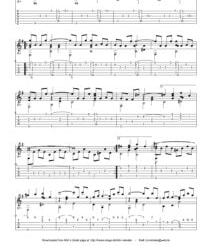
Francis Lai
Read the full article
1 note
·
View note
Video
youtube
Welcome to Music Monday when we bring you classic tunes with jewelry, gemstones or precious metals in the title or lyrics. Today, Hank Williams Jr. tells the story of his 700-mile Southwestern odyssey in a 1975 song called “Clovis, New Mexico.”
Williams recounts how he and his bronc-riding pal, Billy, head out on a very-low-budget adventure that takes them from Bossier City, LA, to Abilene, TX, and finally to Clovis, NM, where Williams is smitten by a black-haired beauty with green eyes — who just happens to be the local purveyor of silver and turquoise jewelry.
He sings, “I needed some strings / Billy wanted a ring / The kind that the Indians made / A voice said hello boys / I’ve got silver and turquoise / And that’s when I saw her face.”
Williams’ trek in an old pickup truck was not scheduled to end up in Clovis, but that’s where he falls in love with a gal he calls “Baby.” He describes her as a “born thriller,” who had a talent for writing lines to songs he couldn’t complete.
“Clovis, New Mexico” was the sixth track on the country singer’s critically acclaimed, breakthrough 1975 album, Hank William, Jr. & Friends. Allmusic editor Thom Jurek wrote that Williams’ release was “one of the best country-rock albums ever made and stands with the best of the outlaw recordings of the era.” It was originally released in 1975 and then re-released in 2000.
Critics claim that the album marks a critical period in Williams’ career when his music veers toward country rock and he develops his own style instead of imitating his famous dad, Hank Williams Sr.
Williams is also a talented musician who can play the guitar, bass guitar, upright bass, steel guitar, banjo, dobro, piano, keyboards, harmonica, fiddle and drums. He was inducted into the Country Music Hall of Fame in 2020.
Born in Shreveport, La., Williams was given the nickname Bocephus as an infant by his dad, who died tragically in 1953 at the age of 29. (Grand Ole Opry fans may remember that Bochephus was the name of the ventriloquist’s dummy that co-starred with comedian Rod Brasfield.)
The 72-year-old is still actively touring, with engagements scheduled in 14 states from the end of May through the middle of August.
We hope you enjoy the audio track of Williams’ performance of “Clovis, New Mexico.” The lyrics are below if you’d like to sing along…
“Clovis, New Mexico”
Written and performed by Hank Williams, Jr.
Well me and Billy
We left Bossier City
Decided that we’d head out west
Been east and south
But it didn’t workout
We were getting’ nowhere fast
Me with my guitar
And him with his saddle
Tryin’ to out do the rest
I sang my heart out
And he rides them broncs now
And that’s what me and Billy do best.
We took interstate 20
‘Til we ran out of money
In a place just past Abilene
So I sang at a honky-tonk
And he broke the bad bronc
And we bought some gas and some beans.
With a whole lot of luck
And an old pickup truck
We made it to New Mexico
We pulled up in Clovis
And I sure didn’t know this
Was as far as I ever would go.
I needed some strings
Billy wanted a ring
The kind that the Indians made
A voice said hello boys
I’ve got silver and turquoise
And that’s when I saw her face.
That’s when I noticed
That girl down in Clovis
A black haired beauty
She set a fire to me
A green eyed lady
In old jeans that were faded
No I didn’t notice
What happened in Clovis
But I called her baby.
I asked her with care
If she’d like to share
An evening with someone like I
I said I ain’t a winner
Just a hard livin’ singer
She smiled and said meet me at nine
We ate tacos and talked
And then we took a walk
In the clean southwestern air
Then we went back to her house
I took my guitar out
And sang of my joy and despair.
She served me her wine
And she helped me write lines
To songs I could not complete
And her eyes seemed to say
Put that guitar away
That’s somethin’ that both of us need.
What a beautiful site
Was her face in the light
And the candles there on the wall
And we reached the height
Of good love on that night
And I hope we never will part.
And I’m glad I noticed
That girl down in Clovis
Daughter of a driller
She’s a born thriller
A green eyed lady
Kinda wild, kinda lazy
I didn’t notice
What happened in Clovis
But I called her baby.
Baby.
Credit: Photo by Andrea Klein, CC BY 2.0, via Wikimedia Commons.
Visit our website at whitejewelers.net
Find us on Facebook
0 notes
Text
"The Shape of Jazz to Come" - Saxophonist and Bandleader Ornette Coleman
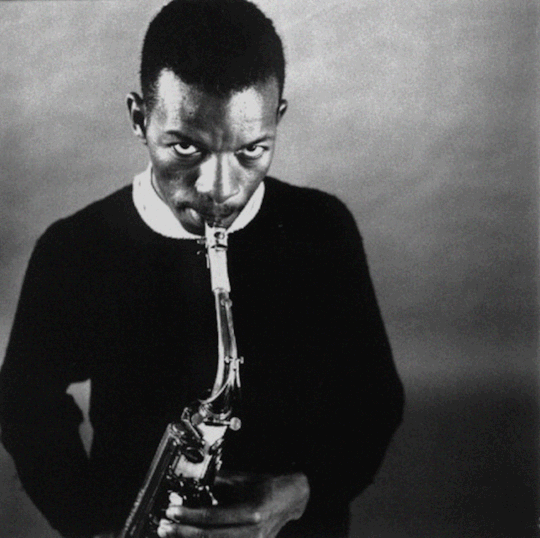
"The Shape of Jazz to Come" is a 1959 album by saxophonist and bandleader Ornette Coleman, his first released on the Atlantic label. It was Coleman's first album to feature his harmolodic concept, which he wrote about in his 1961 book Free Jazz: Ornette Coleman and the Harmolodic Ideal.
The album was controversial upon its release, due in part to Coleman's use of atonality and dissonance. These elements, combined with his use of extended improvisation, made the album difficult for many jazz critics and listeners to appreciate. However, it has since been recognized as one of the most important and influential jazz albums of all time, and helped to usher in a new era of jazz.
In his review for AllMusic, Thom Jurek writes: "This is one of the most important jazz recordings ever made, the date that signaled the arrival of the avant-garde in jazz... The recording is as provocative and challenging now as it was upon its release." Jurek goes on to say that the album "changed the course of jazz history," and that it is "essential for any jazz collection."
Similarly, in his review for The Guardian, John Fordham writes: " Coleman's game-changing 1959 album The Shape of Jazz to Come announced the arrival of free jazz – and still sounds like the future." Fordham goes on to say that the album is "a set of ideas and approaches rather than a suite of conventional tunes," and that it "remains one of jazz's most radical statements."
It is clear that "The Shape of Jazz to Come" is an important and influential album, and one that continues to challenge and provoke listeners. It is an essential album for any jazz fan, and a reminder of the power of jazz to push boundaries and innovate.
https://music.youtube.com/playlist?list=OLAK5uy_l4aerHoWJyp3Y903OySycwulvmmX7wl9Y
#Ornette Coleman#jazz#jazz music#jazzmusic#classical#jazz history#music lovers#musician#musicislife#saxophone#saxophonist
0 notes
Photo
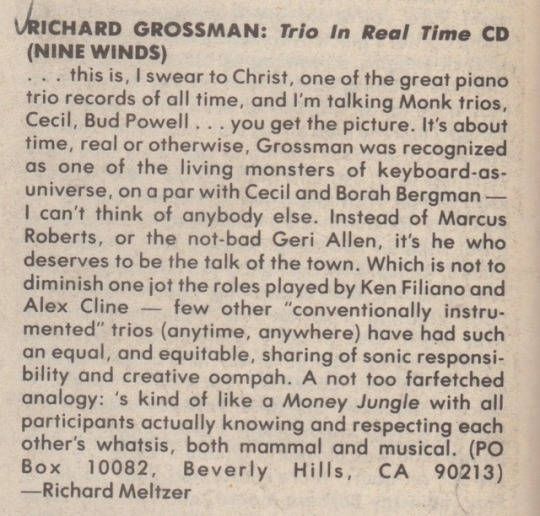
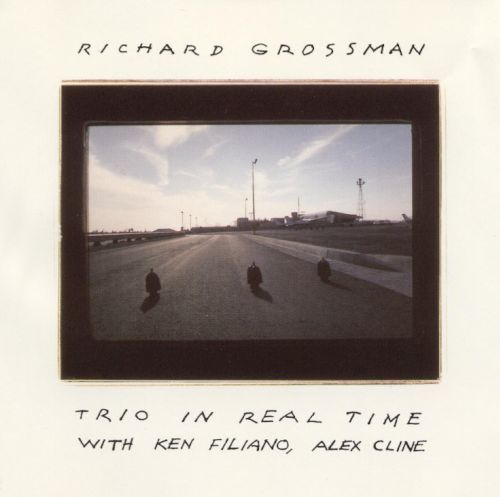
“..this is, I swear to Christ, one of the great piano trios of all time, and I’m talking Monk trios, Cecil, Bud Powell...you get the picture...”
RICHARD GROSSMAN review by RICHARD MELTZER
FORCED EXPOSURE #17 1990 (page 89) JIMMY JOHNSON, Editor
Thom Jurek at All Music Guide felt similarly wowed by this record: “Was there ever a pianist like Richard Grossman? The late pianist was imbued with a harmonic sensibility that seemed to come from the twinning of the spheres rather than from music theory. While his music was uncompromising in its vision, it was not, however, inaccessible. If anything, Grossman' s music was so open, though so thoroughly different, anyone could go inside it and be moved by something they heard...If Grossman's name is not familiar to some fans of improvised music or free jazz, it's only because he was virtually ignored by critics who would rather accept Cecil Taylor's obtuse theories about his fireworks displays on the keyboard. Grossman was a quiet man who strove to express every sound he could imagine existed, and some that didn't, in a near mythological sequence of events that he not only ordered and created, but also adhered to. This is brilliant.”
Richard Meltzer interviewed in August 2000 by Jason Gross at Perfect Sound Forever
Richard Meltzer interviewed in February 2012 by Tony Rettman at RETTSOUNDS: Materiality of Existence
Forced Exposure #17 - in stock at Forced Exposure for $6.00
One RICHARD GROSSMAN title available at Forced Exposure: Where The Sky Ended (HatOLOGY)
Richard Grossman died in 1992. Much of his later work is available on YouTube, including Trio In Real Time...
youtube
#Richard Grossman#Richard Meltzer#Forced Exposure#Jimmy Johnson#1990#2000#2012#Jason Gross#Perfect Sound Forever#Tony Rettman#Rettsounds#Ken Filiano#Alex Cline#Nine Winds Records#Thom Jurek
4 notes
·
View notes
Photo

Album Number Two Hundred Twenty Nine. “High Winds, White Sky” is the second studio album from Bruce Cockburn, released in 1971 on the True North label. It was remastered in 2003 by Rounder Records with two bonus tracks recorded live in 1970. The album received a Canadian gold record award in 1986. My copy is on #truenorthrecords - WTN-3 In a retrospective review, music critic Thom Jurek, writing for Allmusic, called the album "A remarkably fresh and timeless recording... Overall, however, this album—like #sunwheeldance that follows it—presents a far more mystical Cockburn. His tenderness and poetic vision are almost pastoral on these early recordings, something that would get burned off and become hard-bitten (if no less romantic and more dramatic) as his music and social vision grew." #rockandroll #folkrock #canadianrock #ohcanada🇨🇦 #canada #seventiesmusic https://www.instagram.com/kjmr97fm/p/CX04B5_L8qU/?utm_medium=tumblr
5 notes
·
View notes
Photo



Death - Keep on Knocking (1974)
David Hackney / Bobby Hackney
from:
".. For the Whole World to See"
(2009 CD Release)
Detroit Rock 'n' Roll | Proto-Punk
"This is proto-punk at its best. Period."
- Thom Jurek (AllMusicCom)
JukehostUK
(left click = play)
(320kbps)
Personnel:
Bobby Hackney: Lead Vocals / Bass
David Hackney: Guitar
Dannis Hackney: Drums
Produced by Death
Recorded:
@ United Sound Systems Recording Studios
in Detroit, Michigan USA
during 1975

This Band Was Punk Before Punk Was Punk
New York Times March 12, 2009
#Death#.. For the Whole World to See#Drag City Records#Proto-Punk#Detroit Rock 'n' Roll#1970's#David Hackney#Bobby Hackney#Dannis Hackney#Keep on Knocking
7 notes
·
View notes
Text

Kenny Garrett – Sounds from the Ancestors
“Sounds from the Ancestors is Kenny Garrett’s fifth album for Detroit’s Mack Avenue label. The connection is significant. The artist grew up in the Motor City and was mentored by some of its most iconic musicians, including the late trumpeter Marcus Belgrave. Garrett has often referenced the sounds of his hometown including Motown soul, gospel, and its ever-evolving jazz and blues scenes. But here for the first time, he meditates upon them simultaneously, examining their roots in the music of West Africa and its role in the musical development of France, Cuba, Guadeloupe, and of course, Nigeria. Garrett’s core band includes pianist Vernell Brown, Jr. bassist Corcoran Holt, drummer Ronald Bruner, Jr., and percussionist Rudy Bird. He also enlisted a guest cast that includes drummer Lenny White, pianist/organist Johnny Mercier, trumpeter Maurice Brown, conguero Pedrito Martinez, and batá percussionist Dreiser Durruthy, as well as a handful of singers. In addition to playing alto saxophone, Garrett plays electric piano.” – Thom Jurek/AllMusic.
18 notes
·
View notes
Audio
Recorded in January 1971, Cluster began a transition away from the discordant industrial sound of their earlier group Kluster towards softer atmospheres. Thom Jurek of AllMusic describes Cluster as "a dislocating, disorienting meld of random space music, industrial noise, proto-ambient atmospherics, feedback and soundwash". Instrumentation included a pair of organs, Hawaiian guitar, cello and audio generators, all played by Moebius and Roedelius and all of which were electronically treated by Conny Plank. Spencer Grady of BBC Music stated that "far from providing mere background ambience, [the album's] rolling waves of hypnosis are continually exposed to perforation by disorienting surges of energy, imparting wake-up calls to comfort.
#Cluster#1971#Noise#avant-garde#electronica#electronics#Industrial Noise#Cello#Haiwaiian Guitar#Philips
13 notes
·
View notes
Text
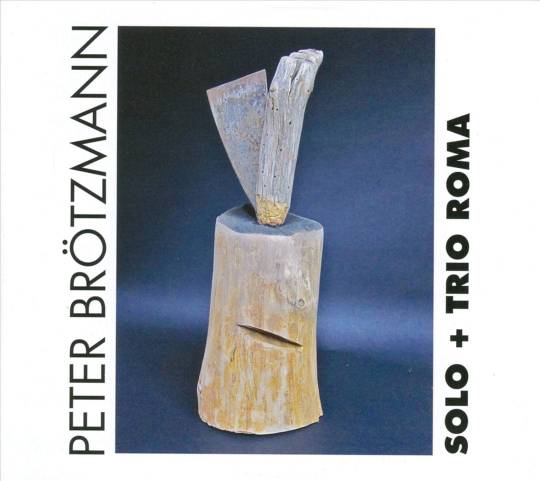
AllMusic Staff Pick:
Peter Brötzmann's Trio Roma
Solo + Trio Roma
This remarkable set, recorded at the Victoriaville new music festival, was drawn from two concerts celebrating the great saxophonist’s 70th birthday. The first is solo. It showcases the beginning of an inward turn to explore conceptions of space, harmony, texture, and melody. It’s reflected often in Brotzmann’s later recordings. The second disc is its exact opposite. It delivers a 70-minute paint peeling skronk gig by the Trio Roman with drummer Paal Nilsen-Love, electric bassist Massimo Pupillo.
- Thom Jurek
2 notes
·
View notes